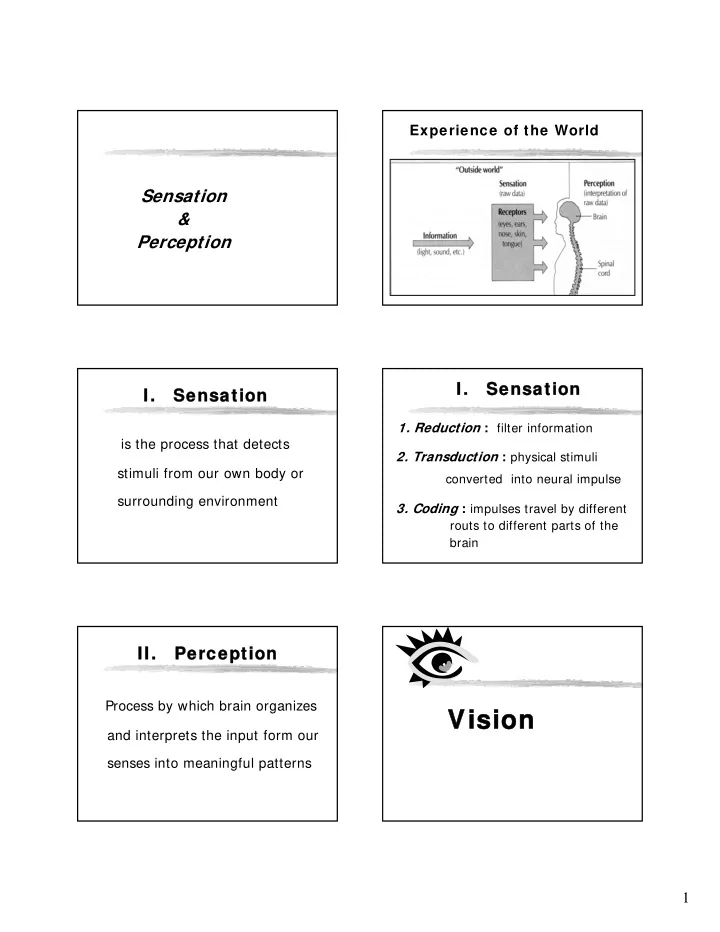

Experience of the World Sensation & Perception I. Sensation I. Sensation I. Sensation I. Sensation 1. Reduction : filter information is the process that detects 2. Transduction : physical stimuli stimuli from our own body or converted into neural impulse surrounding environment 3. Coding : impulses travel by different routs to different parts of the brain II II. Perception . Perception Process by which brain organizes Vision Vision and interprets the input form our senses into meaningful patterns 1
Light Waves Light Waves � Electromagnetic energy � 3 wave lengths - short - middle - long Retina: Retina � Cones (~ 5ml) Photoreceptors: � near center of retina (fovea) extremely � fine detail and color vision sensitive to � daylight or well-lit conditions � Rods (~ 120ml) light � peripheral retina � detect black, white and gray � twilight or low light Transduction Transduction Visual Pathw ay Visual Pathw ay - Light - Eye - Retina - Optic nerve - Blind spot - Optic chiasm - Thalamus - Visual cortex - Association area 2
Color Vision: Trichromatic Theory 3 types of cones that are sensitive to a particular range of light wave-length: - Short: Blue - Medium: Green - Long: Red Color Vision: 2. The Opponent-Process Theory The Opponent-Process Theory We code color by using 2 complimentary pairs of cones that work in pairs: - Red/Green - Blue/Green+ Red Sense of Touch: Sense of Touch: Pain Color-Deficient Vision Experience of pain = Sensation + Emotion � People who suffer red-green blindness have trouble Placebo effect perceiving the number within the Nocebo effect design 3
Gate-Control Theory Mechanism of Decreasing Pain Neurotransmitters: (Melzack & Wall): 1. Substance P : impulses compete “read” the pain for entrance into the brain 2. Endorphins : inhibit the release of substance P 4
Recommend
More recommend